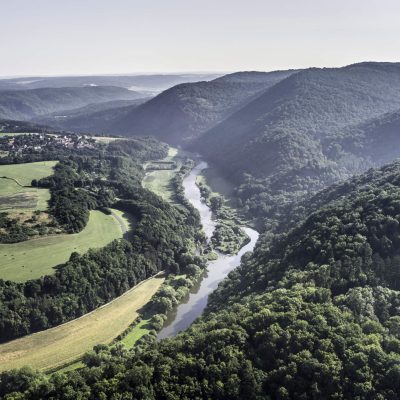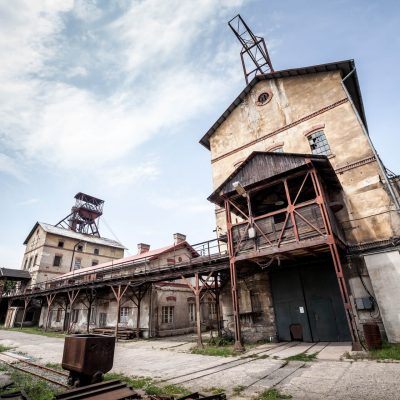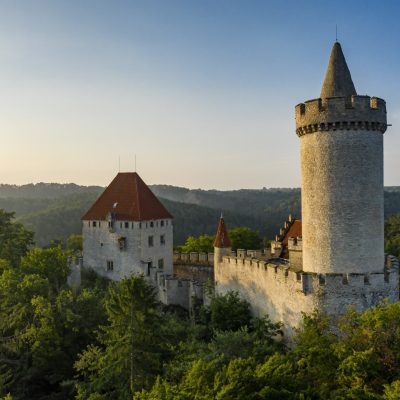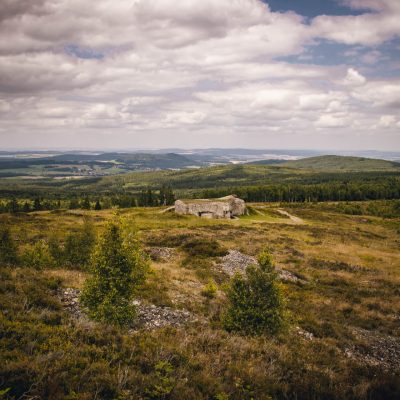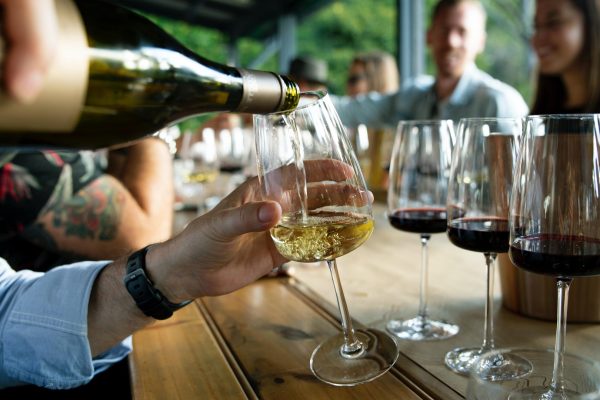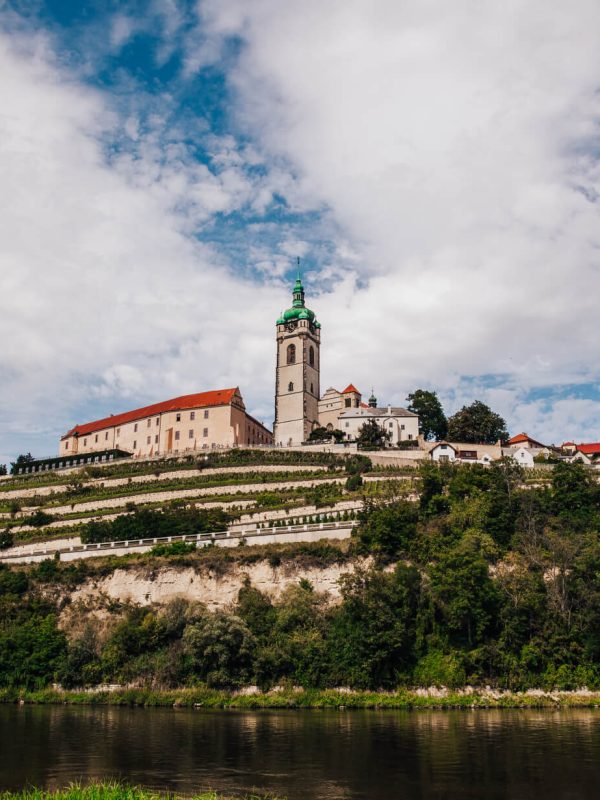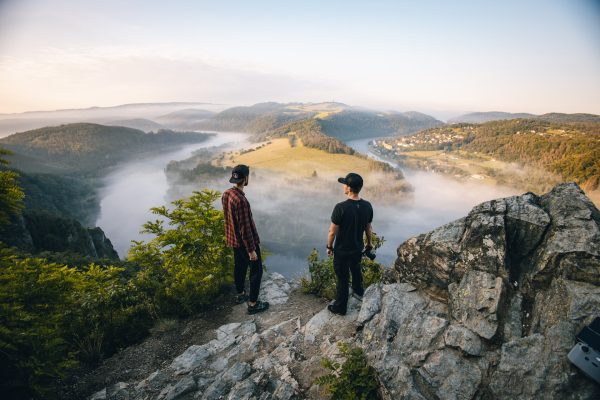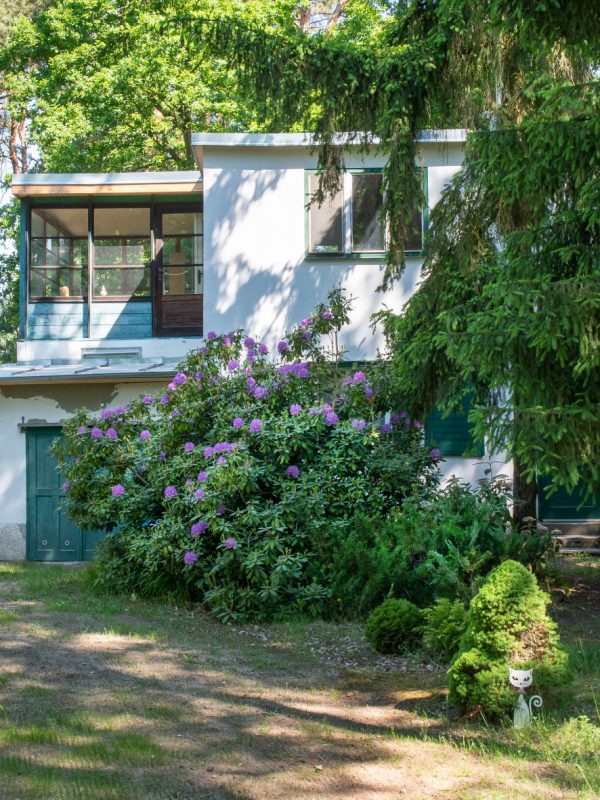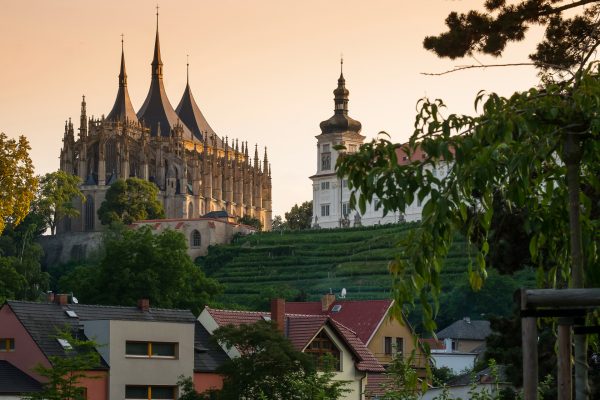Follow in the footsteps of rulers, nobles and artists, get to know the places where Czech and European history was made, as well as locations that inspired ground-breaking works of art.
Find out about our ancestors, what their day-to-day life was like, sometimes carefree, sometimes challenging. Get awed by the grandeur of architecture and the gifts of nature. Take a walk in the forests and meadows that UNESCO ranks among the most beautiful in the world. Explore Central Bohemia and visit ten destinations that await you with open arms!
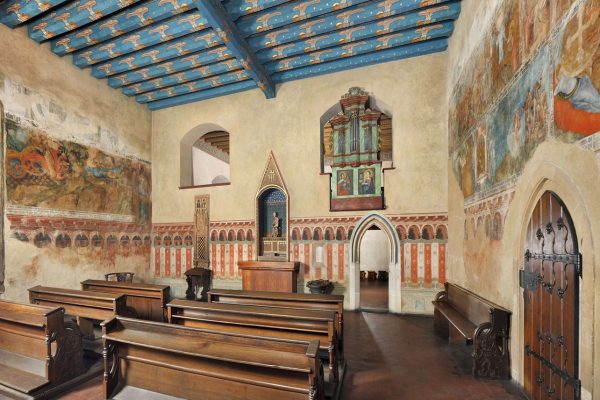
Karlštejn Castle
Where else to start your travels around Central Bohemia than in the castle most symbolic of our country’s famous and vibrant past. Its origins date back to 1348, during the reign of the Czech King and Holy Roman Emperor Charles IV, who ordered its construction. Karlštejn was built, among other things, to become the ‘safe’ for the rarest royal treasures – collections of holy relics and the Imperial crown jewels. And keep them safe it surely did! They were guarded conscientiously, with short breaks, for almost two hundred years.
Although the monarch’s builders took pride in their work, given the castle’s long history it had to be restored several times – among others, modified in late Gothic style and at the end of the 19th century, in the spirit of purism. The grandeur of the castle will amaze you from the outside and this impression will only be enhanced by exploring the interiors. You will see sacral spaces of world importance, such as the Chapel of the Holy Cross, ornately decorated with precious stones, gold and board paintings from the workshops of Master Theodoricus, as well as the Chapel of St Catherine, also decorated with precious stones and murals. And you’ll even get to see the replica Crown of St Wenceslas!
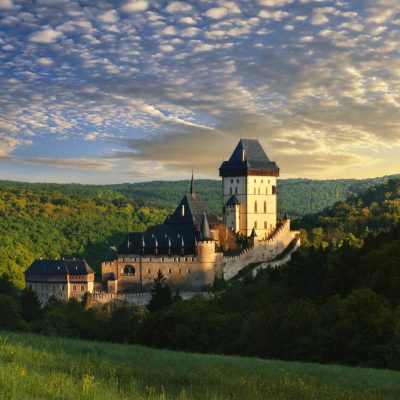
Karlštejn
Karlštejn CastleIt holds a very special position among Czech castles. It is one of the symbols of Czech statehood. There used to be crown jewels hidden behind its walls. Introducing: His Majesty Karlštejn.
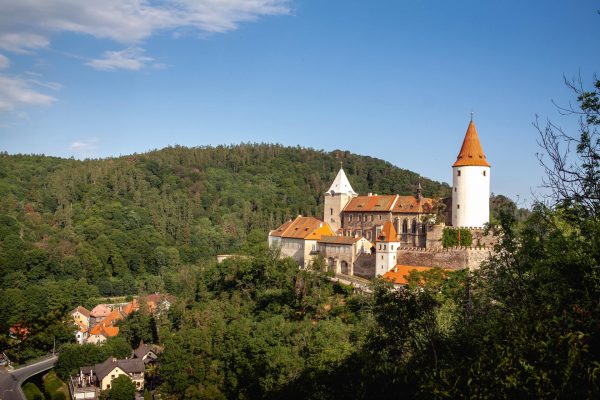
Křivoklát Castle
One of the most admired Central Bohemian castles is Křivoklát. This seat is also associated with that monarch known as ‘Pater Patriae’, Father of the Fatherland, Charles IV. He spent time here in his childhood and adulthood, but was not the castle’s founder.
Křvoklát was built in the 12th century during the reign of King Přemysl Otakar II, and thus is one of the oldest Czech royal seats. It was also royalty’s favoured hunting castle. For example, King Wenceslas IV, the son of Charles IV, found refuge here. It was indeed here that the unassertive monarch hid from the burdens of statesmanship, and thus invested heavily in having it done up. Křivoklát became a true Gothic pearl under King Vladislaus II Jagiellon – when it became one of the most grandiose residences in Central Europe. Its last aristocratic owners descended from ancient lineage of the Fürstenbergs, and their era is one of the happiest in Křivoklát history. It is thanks to them that the castle remained standing and did not dilapidate. Thanks to their dedication and care, we can today walk through its chambers and halls full of rare art collections; see the Great Tower, which once housed one of the earliest castle museums; or peruse the library of 52,000 volumes.
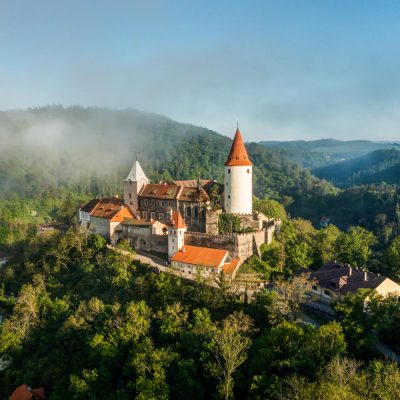
Křivoklát
Křivoklát CastleOne of the oldest and also the most filmed castles in the country is hidden in the deep forests of the Křivoklátsko Protected Landscape Area. It's walls witnessed love stories and royal decisions shaping our society.
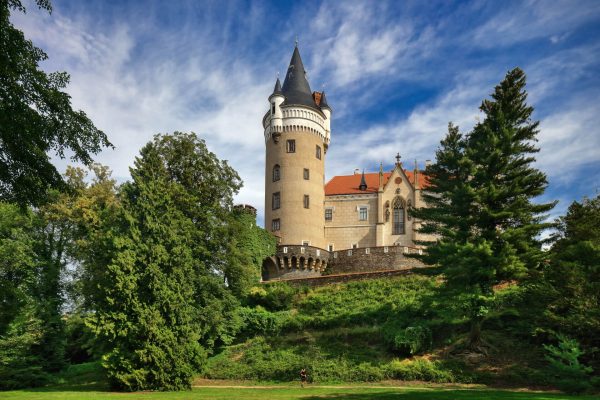
Žleby Château
From castles to châteaux… or rather, a château that started out as a castle. The Gothic seat of Žleby was first written about in 1289 and was probably founded by the Lords of Lichtenburg. Its history also features Emperor Charles IV, who bought it and then made it his liege property, for his squires and knights.
The complex as we know it today is the result of late Gothic reconstruction from the mid-15th century. Other major changes took place in the 16th century – and since then we can speak of a château, in the Renaissance style. It is also worth noting the Auersperg family ownership era; they owned the château up until the 20th century. During their stewardship, some romantic exterior modifications took place, e.g. the northern façade was rebuilt in Elizabethan Renaissance style, and an English landscaping park established. Changes were also made to the interiors – bringing collections of weapons, paintings, rare utensils and ornate furniture, giving a glimpse of how the nobility in the 19th century spent their days.
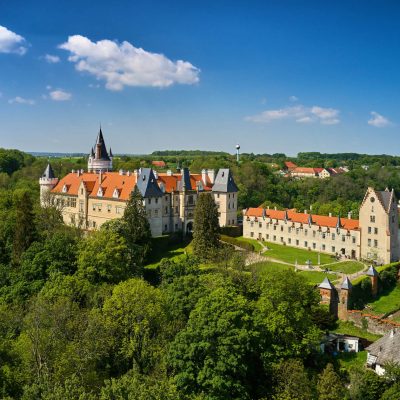
Žleby
Žleby ChâteauTransport yourself to the land of fairy tales and romantic dreams. The château building inspired by the Elizabethan Renaissance and French Gothic is located on the very edge of the Central Bohemia region. You can choose
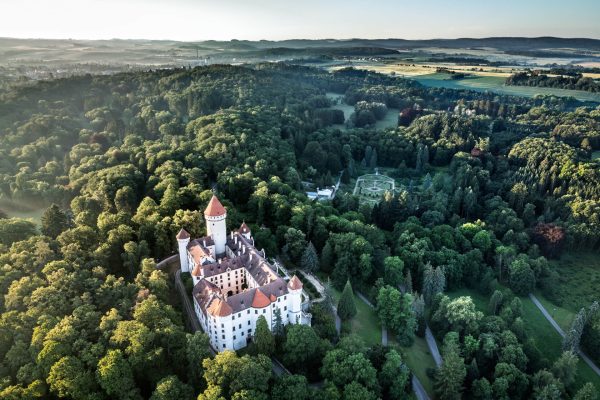
Konopiště Château
You don’t have to travel all the way to far away Asia to see the Asian black bear; just head to Konopiště Castle, which includes a ‘beararium’, home to this “moon-chested” Tibetan bear.
Bear-keeping goes back a long way here – the first furry chaps were brought here in the middle of the 19th century by the Lobkowicz family and Archduke Franz Ferdinand d’Este continued with it. But that’s far from all there is to see! This seat was established around 1294 by the Bishop of Prague, Tobias of Benešov and its construction inspired by the renowned and sturdy French fortresses of the time.
In the 18th century, Konopiště was transformed into a more comfortable Baroque residence, by the Lords of Vrtba. For a short time, the castle belonged to the aforementioned Archduke and heir to the Austro-Hungarian throne, Franz Ferdinand d’Este. He had it rebuilt in a more historical style, put his extensive collections here and had the surroundings landscaped as a park.

A less glorious phase of its history was during World War II, when the chief of staff of the Nazi SS units resided here. Fortunately, its strong walls that do not belie their fortress origins have endured all the trials and tribulations of history, and today keep watch over bears as well as rare works of art.
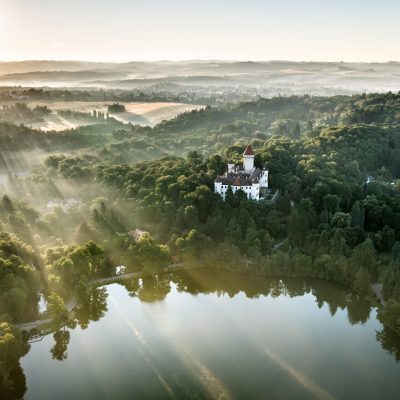
Benešov
Konopiště ChâteauThe grand château has hosted many important events, hunting festivals and is home to wild bears that still live in the château moat today.
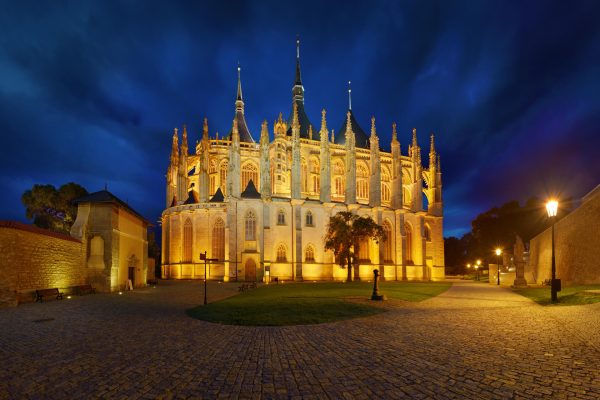
Cathedral of St Barbara
A monument that makes its way onto the UNESCO World Heritage List clearly cannot be missed off our list of the most worthwhile things to see. The Kutná Hora Cathedral, considered a late Gothic gem, is one of only four Czech sacral buildings of the cathedral type, and its magnificence bears out the glory and wealth of Kutná Hora in its silver mining heyday, when the city was one of the most important centres of the realm.
The Cathedral has been associated with miners from the onset, indeed its name is proof – dedicated to the Virgin Barbara, the Christian patron saint of all who make their living in a hazardous occupation. Construction started in the second half of the 14th century, but the demanding architectural plans were not easy to fulfil and so numerous renovations were done over the centuries. The contemporary form of the Cathedral dates from the turn of the 19th and 20th century, when extensive regothicization took place.
Each epoch left its indelible marks on the interior; in the cathedral nave are rare Gothic frescoes and precisely worked examples of stone-masonry, Baroque altars, sculptures and paintings, the nave’s main feature being a Renaissance pulpit with Baroque panelling. Among the most renowned builders leaving their mark on the wondrous work were Matěj Rejsek, who paid great attention to the decorative elements, and Benedikt Ried, who placed considerable emphasis on the overall architectural design.
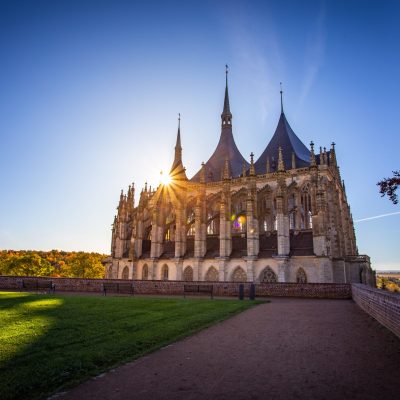
Kutná Hora
The Cathedral of St. Barbara in Kutná HoraThe Gothic landmark of the royal town of Kutná Hora, a UNESCO World Heritage Site. The Cathedral of St. Barbara is an example of the wealth of a medieval town combined with the piety of its inhabitants.
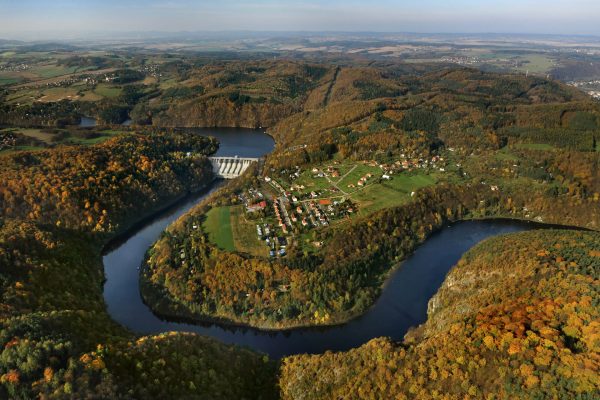
Slapy Dam
The Slapy Dam is a site of unique technical heritage, where you can enjoy hours and hours at the waterside, try out countless water sports and enjoy the beautiful landscape along the Vltava river.
Slapy, the fifth largest dam in the Czech Republic, is part of the Vltava Cascade and preparations for this unusual hydro-engineering project date back to World War II. Building work began in earnest in 1952, but was already finished by 1955, when the hydroelectric power plant part of the project entered its test phase. Filling up took place in unprecedented dramatic circumstances – the reservoir filled up literally within days, during the 1954 floods.
The main mission of the dam includes generating electricity, acting as a Prague’s buffer against floods, being a source of drinking and utility water; but it also ranks among the most popular recreational destinations for all who seek to get away from the hustle and bustle and take a break by the waterside, surrounded by nature.
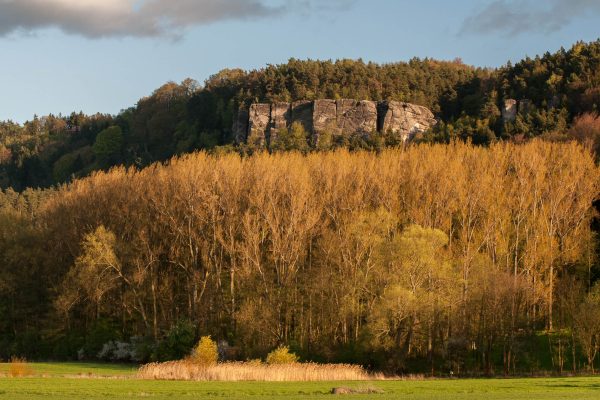
Bohemian Paradise Protected Landscape Area
Not only is the saying true that ‘the journey sure is nice, to Bohemian Paradise’, but this area features distinctive rock citadels, which prompted its being declared the first Protected Landscape Area in Czechoslovakia in 1955, subsequently entered on the prestigious UNESCO list of European Geoparks, in 2005.
Another reason for the growing interest in protecting this territory is its extraordinary landscape diversity, where dense forests alternate with meadows and wetlands, deep ravines with sandstone rocks, and natural features with man-made ones. Humans have lived here for over 10,000 years and mankind’s presence is borne out by, among other things, the above-mentioned rock citadels. Examples include the Příhrazské skály scenic rocks, with their distinctive complex of rock towns and a rock formation oddity, dubbed the ‘Mare’s Head’.
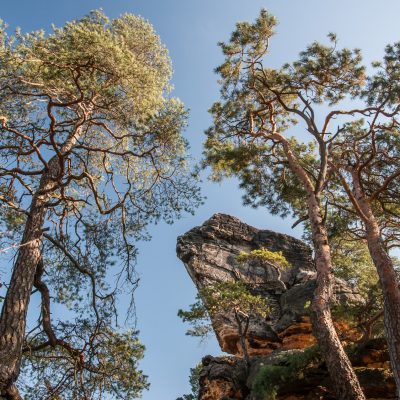
Klokočí
Bohemian Paradise Protected Landscape AreaThe uniqueness of the Bohemian Paradise expanse was given due recognition as early as 1955, when the first Protected Landscape Area (“CHKO”) of the former Czechoslovakia was declared.
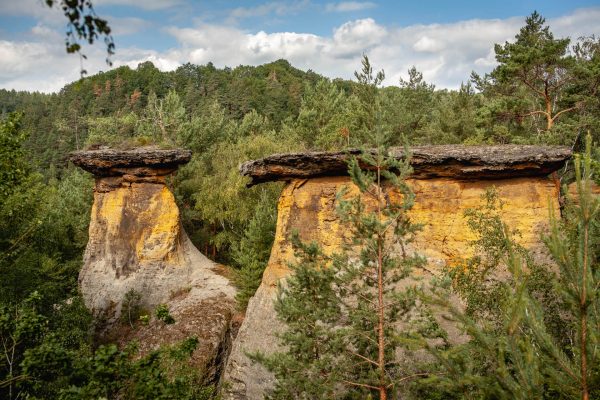
Kokořínsko Protected Landscape Area – and the ‘Máchův kraj’ zone
Kokořínsko is a region of woodland, ravines, ponds, lakes and wetlands, but the most famous are its sandstone rocks and rock citadels that have made the area famous and have since 2014 secured the ‘order of merit’ of being a Protected Landscape Area, comprising two distinct territorial units – Kokořínsko and Máchův kraj, a landscape zone named after the poet, Mácha, and lying just outside the Central Bohemian region boundary.
The tell-tale symbols of Kokořínsko are distinctive natural landmarks – rock formations that often take bizarre shapes, and accordingly have names such as ‘The Frog’, ‘The Boar’, ‘Snow White and the Seven Dwarfs’ – and the best-known, “Pokličky” [pan-lids] – as well as man‑made features. When it came to buildings, our ancestors showed great respect for nature, and the area’s settlements have since the very beginning harmonized with the surrounding landscape. The character of the locality is thus complemented by picturesque folk architecture as well as more momentous buildings – including Kokořín Castle, which charmed one of our greatest poets, Karel Hynek Mácha himself.
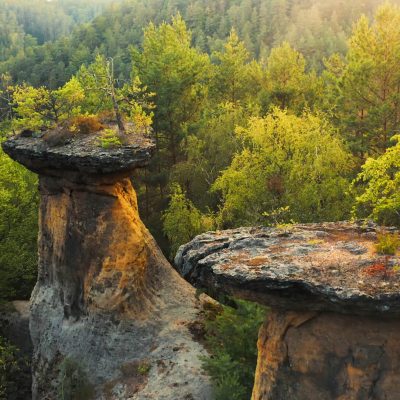
Mšeno
Kokořínské pokličkyKokořínsko is full of beautiful forests where you can find unique and inspirational sandstone rocks and rock formations. How were the dreamy rock formations of Kokořínské pokličky created?
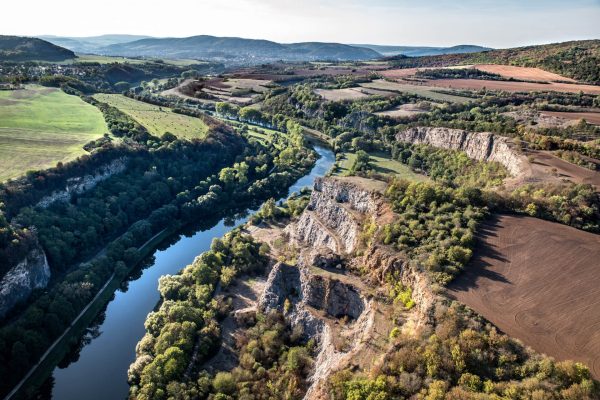
Bohemian Karst Protected Landscape Area
Most of our tips invite you to explore the landscape and monuments standing on it, but this time we invite you underground. The Bohemian Karst zone, which was declared a Protected Landscape Area in 1972, includes some 700 caves and the most extensive cavern system in Bohemia.
This remarkable feature is called Koněpruské jeskyně, and lies beneath a hill called the ‘Golden Horse’; its passageways total over 2 kilometres, dating back 25-30 million years. They are known and admired for their beautiful stalactite formations. The whole area of the Bohemian Karst is a fossil-bed of world significance. Already in the 19th century it was made famous by the highly regarded French paleontologist Joachim Barrande, who discovered many sites rich with fossil finds.

When you are done exploring underground, take the time to stroll through the beautiful wild landscape surroundings, which will enthral you as much as the naturalists of yester-year – who started calling this territory the “Český kras” not least because the word for karst reminds Czechs of “krása”, beauty.
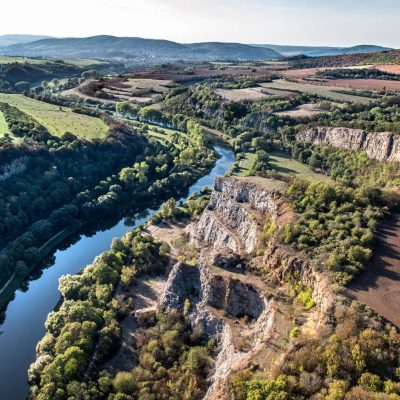
You can explore the wealth of the Czech karst, the largest karst area in Bohemia, both on the surface and underground in its unique caves.
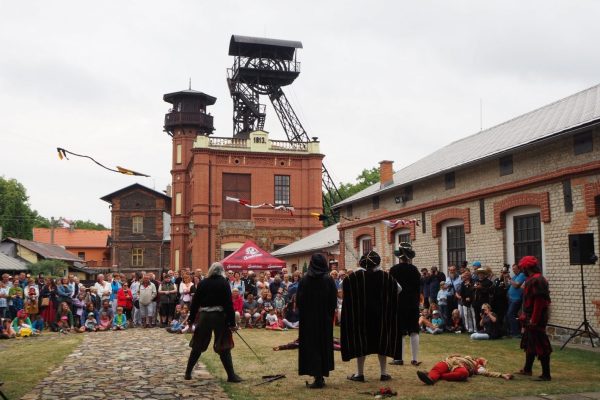
Příbram Mining Museum
You will also take a trip underground when visiting the Open-Air Museum at Březové Hory, which comes under the Příbram Mining Museum, but in a manner quite unlike your exploration of the Bohemian Karst. The museum, consisting of the complexes of three mines (Ševčinský, Vojtěch and Anna), offers you an extraordinary experience. You will find yourself taken back to beyond the last century and to places where brave miners spent most of their busy working days. For instance, you will take a mine train and pass through the ‘adit’ into a mining passageway quite among to the deepest in Central Europe.

There are many attractions and unique technical monuments to be seen by daylight too – the mine-shaft building from 1870, the tower from 1879, or a miner’s cottage depicting the lifestyle of a mining family at the turn of the 19th and 20th century – to name but a few of the places and experiences that await you in the open-air museum. And something of interest to end on? The Příbram Mining Museum is one of the largest museums of its kind anywhere in Europe!
Worth To See
Karlštejn Castle
It holds a very special position among Czech castles. It is one of the symbols of Czech statehood. There used to be crown jewels hidden behind its walls. Introducing: His Majesty Karlštejn.
Explore
Czech Karst Protected Landscape Area
You can explore the wealth of the Czech karst, the largest karst area in Bohemia, both on the surface and underground in its unique caves.
Explore
Křivoklátsko Protected Landscape Area
Křivoklátsko: a region of dense forests in the middle of Bohemia – the deciduous and mixed vegetation covers almost one third of the entire area. We could talk about what to see there all day long.
Explore
Mayrau Mining Museum
At Kladno's mining open-air museum, step into an atmosphere frozen in time, with mining machinery and uniforms preserving the industrial legacy.
Explore
Kokořín Castle
The "Cursed Castle", which Emperor Ferdinand wrote off after the Thirty Years War, banning repair investments. And at the same time, a castle that has enchanted and inspired artists and was rescued thanks to the efforts.
Explore
Bohemian Paradise Protected Landscape Area
The uniqueness of the Bohemian Paradise expanse was given due recognition as early as 1955, when the first Protected Landscape Area (“CHKO”) of the former Czechoslovakia was declared.
Explore
Brdy Protected Landscape Area
Our newest protected landscape area, established in 2015, is revered as the promised land by Czech hikers. It is a true paradise for anyone seeking silence and tranquillity in the heart of nature.
Explore

